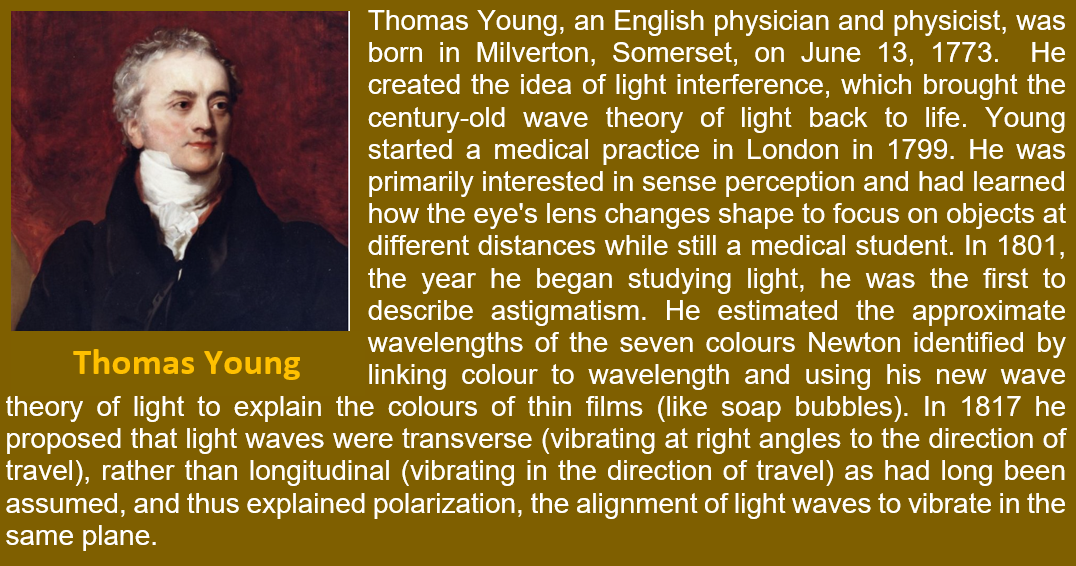
In 1637 Descartes developed the corpuscular model of light and deduced Snell’s law using this model . It described how light is reflected and refracted at an interface.As per the prediction of the corpuscular model, if the light ray (upon refraction)bends towards the normal, then light would travel faster in the second medium. Isaac Newton expanded on this corpuscular model of light.
Our discussion in this chapter will centre on the wave theory of light, which was proposed in 1678 by Dutch physicist Christiaan Huygens. As we shall see, the wave model was able to provide a satisfactory explanation for the phenomena of reflection and refraction; on the other hand, it predicted that in the second medium, the speed of light would be reduced if the wave bent towards the normal during refraction. This defies the forecast produced by applying the corpuscular model of light.
It became clear that light is a wave phenomena when Thomas Young carried out his well-known interference experiment in 1801.
For the roughly forty years that followed Young’s interference experiment, a lot of tests involving the interference and diffraction of lightwaves were conducted; these experiments could only be successfully explained by presuming a wave model of light. But the main challenge was figuring out how light waves could travel through vacuum, since it was previously believed that waves needed a medium to propagate.
When Maxwell proposed his renowned electromagnetic theory of light, this was clarified. In order to describe the laws of electricity and magnetism, Maxwell created a set of equations.Thus, according to Maxwell, light waves are associated with changing electric and magnetic fields; changing electric field produces a time and space varying magnetic field and a changing magnetic field produces a time and space varying electric field. The changing electric and magnetic fields result in the propagation of
electromagnetic waves (or light waves) even in vacuum.
The original statement of the Huygens principle and the derivation of the laws of reflection and refraction will be covered in this chapter. We shall talk about the superposition-based interference phenomenon and will talk about the Huygens-Fresnel principle-based phenomena of diffraction. Finally, we will talk about the polarisation phenomena which is based on the fact that light waves are transverse electromagnetic waves.
Get Full Access Of the Chapters
